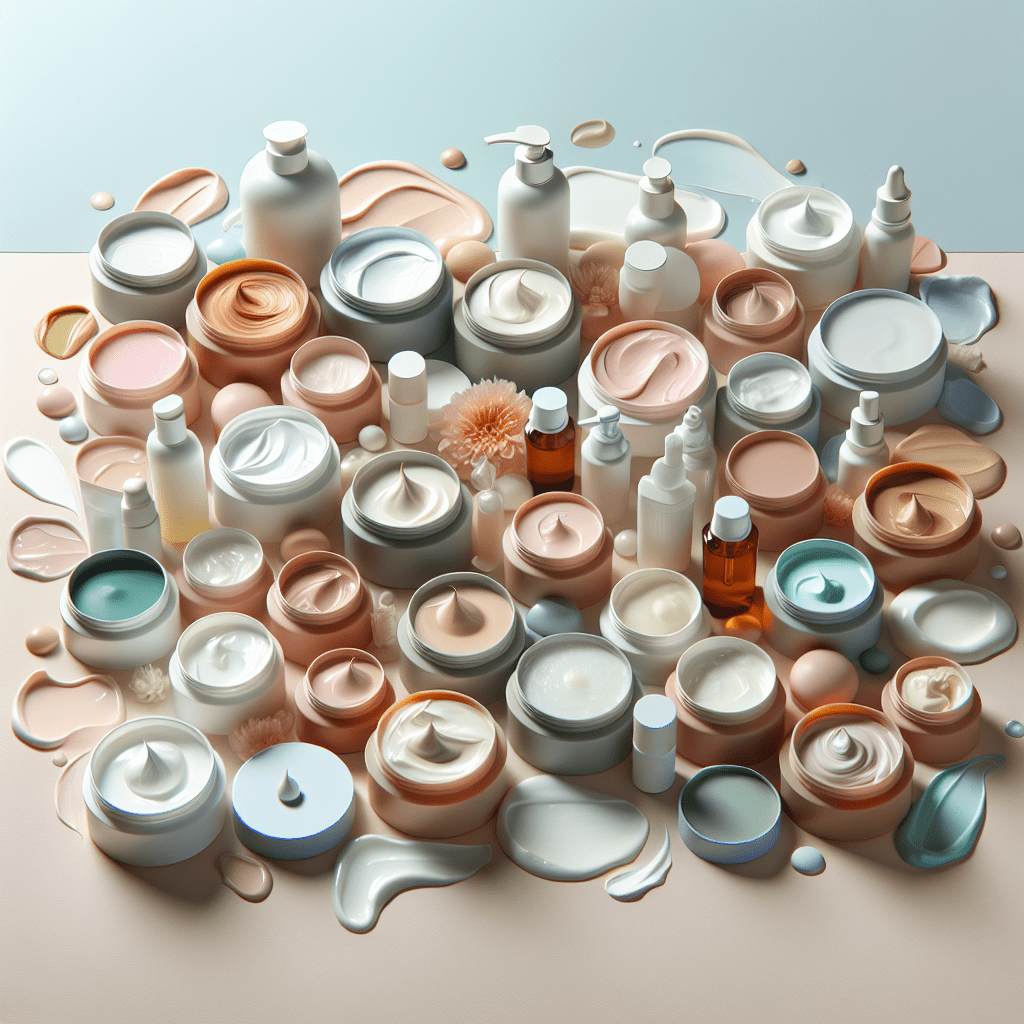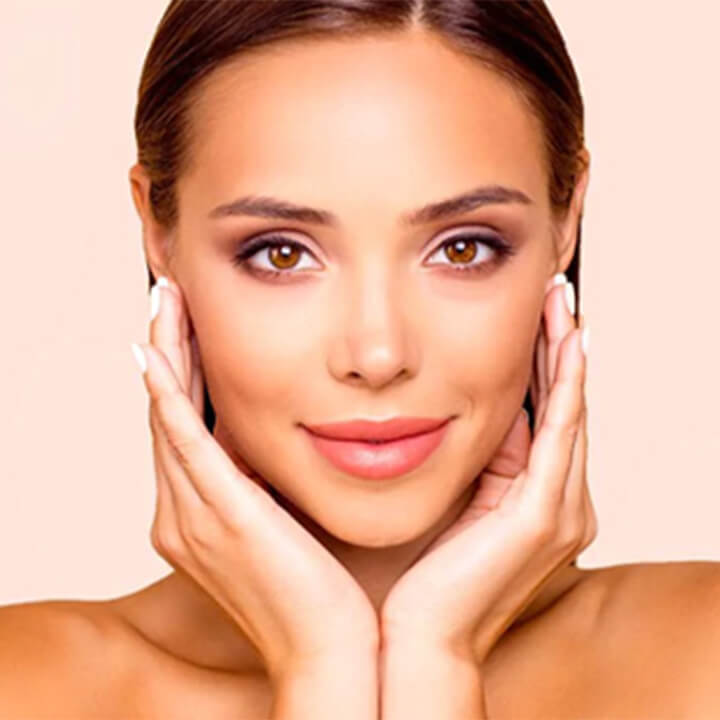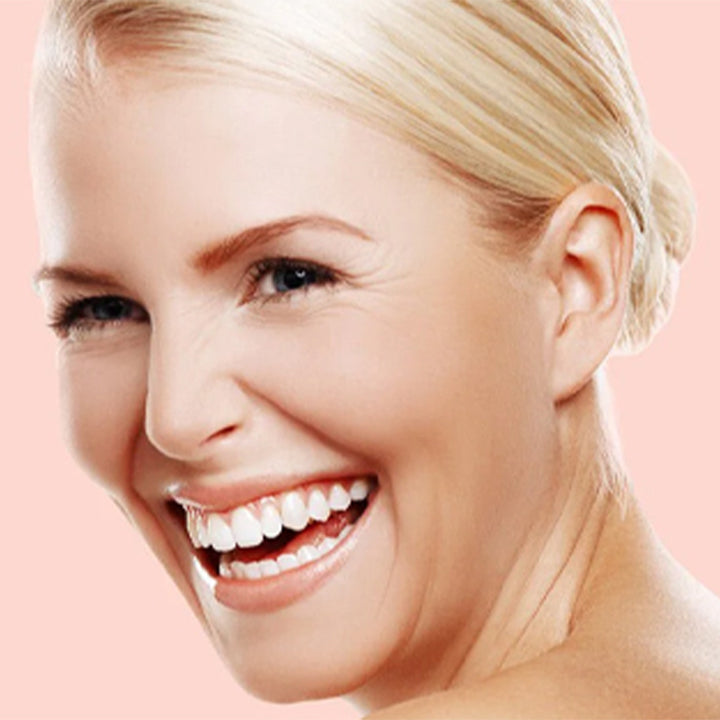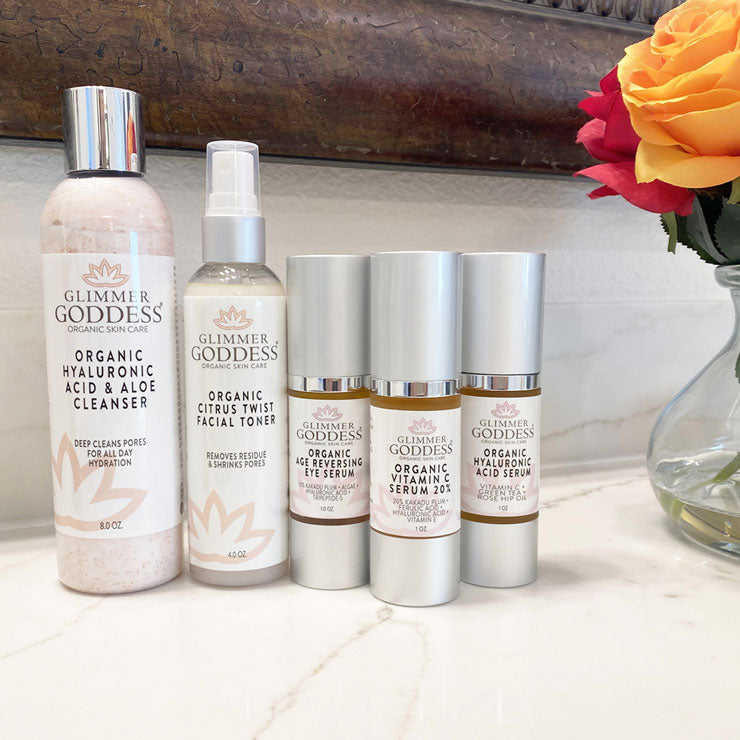
Unlock the Secrets of Face Creams: A Complete Guide to the Best for Your Skin
Explore the world of face creams with this comprehensive guide that delves into the differences between moisturizers, nourishing creams, and anti-aging wonders. Discover the importance of SPF in face creams, the optimal age for using anti-aging creams, and how different textures cater to various skin types.
The Skincare Essentials: Moisturizers, Nourishing Creams, and Anti-Aging Wonders
How Do Moisturizers Differ from Nourishing Creams?
Navigating the world of skincare can be a daunting task, especially when it comes to understanding the differences between various products. Two common categories that often leave people confused are moisturizers and nourishing creams. While they may seem similar at first glance, these two types of skincare products serve distinct purposes and offer unique benefits.
Moisturizers: The Quenchers of Dry Skin
- Moisturizers are designed to hydrate the skin by drawing in and locking in moisture, preventing dryness and improving the overall appearance and texture of the skin.
- They typically contain humectants, such as glycerin or hyaluronic acid, which attract water and help the skin retain it.
- Moisturizers can be light and easily absorbed, making them suitable for all skin types, including oily and acne-prone skin.
- They help maintain the skin's natural barrier function, which is essential for protecting the skin from environmental stressors.
Nourishing Creams: The Skin's Indulgence
- Nourishing creams, on the other hand, are designed to provide deeper nourishment and replenishment to the skin.
- They often contain richer, more emollient ingredients, such as shea butter, plant oils, or ceramides, which help to strengthen the skin's barrier and provide a more luxurious, velvety feel.
- Nourishing creams are particularly beneficial for dry, mature, or dehydrated skin, as they offer a more intensive level of hydration and nourishment.
- These creams can help to improve the skin's overall suppleness, reduce the appearance of fine lines and wrinkles, and leave the complexion looking radiant and healthy.
While both moisturizers and nourishing creams play a crucial role in maintaining healthy, glowing skin, the key difference lies in their intended purpose and the level of nourishment they provide. The choice between the two often comes down to individual skin type and needs.
What Role Does SPF Play in Face Creams?
When it comes to skincare, sun protection is a crucial component that should never be overlooked. Many face creams and moisturizers now come with built-in SPF, but what exactly does this mean, and why is it so important?
The Importance of Sun Protection
- Exposure to the sun's harmful UV rays can lead to a variety of skin concerns, including premature aging, sun spots, and an increased risk of skin cancer.
- Incorporating SPF into your daily skincare routine is essential for protecting your skin from the damaging effects of UV radiation.
- SPF, or sun protection factor, is a measure of how much solar energy (UVB radiation) is required to produce sunburn on protected skin compared to unprotected skin.
SPF in Face Creams: A Dual-Purpose Solution
- Face creams and moisturizers that contain SPF offer the dual benefit of hydrating and nourishing the skin while also providing a layer of sun protection.
- These products make it easier to incorporate sun protection into your daily skincare routine, ensuring that your skin is protected even on days when you may not be actively applying a separate sunscreen.
- The SPF level in face creams can vary, with the recommended minimum being SPF 30 for everyday use.
Choosing the Right SPF for Your Skin
- When selecting a face cream with SPF, it's important to consider your skin type and the level of sun exposure you'll be experiencing.
- For individuals with fair skin or those who spend a significant amount of time outdoors, a higher SPF (such as SPF 50) may be more appropriate to ensure adequate protection.
- It's also important to remember to reapply face creams with SPF throughout the day, just as you would with a dedicated sunscreen, to maintain the level of protection.
Incorporating a face cream with SPF into your daily skincare routine is a simple and effective way to keep your skin healthy, hydrated, and protected from the sun's harmful rays. By choosing the right SPF for your needs, you can enjoy the benefits of nourished, radiant skin while also safeguarding it from the damaging effects of UV exposure.
Are Anti-Aging Creams Worth It for All Ages?
The quest for youthful, radiant skin is a universal desire, and the anti-aging skincare market is flooded with a wide array of products promising to turn back the clock. But are these anti-aging creams truly worth the investment, and do they benefit individuals of all ages?
The Science Behind Anti-Aging Creams
- Anti-aging creams typically contain a variety of active ingredients, such as retinoids, vitamin C, and alpha-hydroxy acids, that work to address the visible signs of aging.
- These ingredients can help stimulate collagen production, improve skin elasticity, and reduce the appearance of fine lines and wrinkles.
- By targeting the underlying causes of skin aging, such as sun damage, environmental stressors, and natural cellular turnover, anti-aging creams aim to restore a youthful, radiant complexion.
The Optimal Age for Anti-Aging Creams
- While anti-aging creams can be beneficial for individuals of all ages, the optimal time to incorporate them into your skincare routine varies.
- For younger individuals, in their 20s and 30s, anti-aging creams can serve as a preventative measure, helping to maintain healthy, youthful-looking skin and delay the onset of visible signs of aging.
- For those in their 40s and beyond, anti-aging creams can be particularly helpful in addressing the more pronounced signs of aging, such as deep wrinkles, age spots, and sagging skin.
Tailoring Your Approach to Anti-Aging
- It's important to note that not all anti-aging creams are created equal, and the specific ingredients and formulations can vary greatly.
- When selecting an anti-aging cream, it's crucial to consider your skin type, any existing skin concerns, and the desired results you hope to achieve.
- Consulting with a dermatologist or skincare professional can help you identify the most suitable anti-aging products for your individual needs and ensure that you're using them correctly for optimal results.
Whether you're in your 20s or your 60s, incorporating a high-quality anti-aging cream into your skincare routine can be a valuable investment in the long-term health and appearance of your skin. By addressing the underlying causes of aging and providing targeted nourishment, these creams can help you achieve a more youthful, radiant complexion at any age.
As a skincare enthusiast and creative writer, I believe that understanding the nuances between different skincare products, such as moisturizers, nourishing creams, and anti-aging creams, is key to developing an effective and personalized routine. By delving into the science and benefits of these products, we can make informed decisions that cater to our unique skin needs and preferences, ultimately achieving a healthy, glowing complexion that radiates confidence and beauty.
The Texture Treasure Trove: Unlocking the Skin's Secrets
Which Textures Work Best for Oily Skin?
If you have oily skin, finding the right texture in your skincare products can make all the difference. Certain textures are better equipped to manage excess shine and keep your complexion looking fresh and balanced.
Lightweight and Oil-Free Formulas
- Oily skin types should prioritize lightweight, oil-free moisturizers and serums that won't clog pores or contribute to further shine.
- Look for water-based or gel-cream textures that provide hydration without heaviness.
- Avoid thick, creamy formulas that can feel greasy and lead to an undesirable shiny appearance.
Mattifying and Blotting Textures
- Powdery, mattifying textures can help absorb excess oil throughout the day, keeping your skin looking fresh and matte.
- Blotting papers or oil-absorbing sheets are also essential tools for oily skin types, allowing you to quickly and discreetly remove unwanted shine.
- Applying a thin layer of a mattifying primer or setting powder can help control oil and create a smooth, uniform complexion.
Exfoliating Textures
- Regular exfoliation is key for oily skin, as it helps remove built-up oil, dead skin cells, and impurities from the surface.
- Look for scrubs or cleansers with a slightly gritty or grainy texture to slough away debris and unclog pores.
- Chemical exfoliants containing alpha-hydroxy acids (AHAs) or beta-hydroxy acids (BHAs) can also be highly effective for oily skin types.
Oily skin requires a delicate balance of hydration and oil control. By choosing the right textures, you can maintain a healthy, radiant complexion without the unwanted shine.
What Texture Should Dry Skin Seek in a Cream?
Dry skin types have their own unique needs when it comes to the texture of their skincare products. The right formula can provide much-needed nourishment and replenishment to parched, flaky complexions.
Rich, Creamy Textures
- Dry skin types should gravitate toward thick, creamy moisturizers that deliver intense hydration and nourishment.
- Look for formulas with a dense, buttery texture that melts into the skin, providing a luxurious and comforting application.
- Ingredients like shea butter, ceramides, and nourishing oils can help strengthen the skin's protective barrier and lock in moisture.
Occlusive Textures
- Occlusive textures, such as balms and ointments, can create a protective layer on the skin's surface to prevent moisture loss.
- These thicker, more emollient formulas are ideal for targeting very dry, dehydrated areas and providing an extra boost of hydration.
- While they may feel heavy at first, occlusive textures can deliver much-needed nourishment to dry skin types.
Hydrating Serums
- In addition to rich, creamy moisturizers, dry skin types can benefit from the use of hydrating serums.
- Serums with a lightweight, watery texture can deeply penetrate the skin and deliver intense, concentrated hydration.
- Look for serums containing hyaluronic acid, glycerin, or other humectant ingredients to quench thirsty skin.
Dry skin craves moisture, so the texture of your skincare products should reflect that need. By incorporating rich, occlusive, and hydrating formulas into your routine, you can restore suppleness and comfort to your complexion.
How Do Combination Skin Products Balance Different Needs?
Combination skin can be a tricky skin type to manage, as different areas of the face may have vastly different needs. Choosing the right texture in your skincare products is crucial for achieving a balanced, healthy complexion.
Lightweight, Mattifying Textures for the T-Zone
- The T-zone (forehead, nose, and chin) of combination skin is often oilier than the rest of the face.
- Lightweight, mattifying textures in this area can help control shine and prevent clogged pores.
- Look for oil-free, gel-based moisturizers or mattifying primers to keep the T-zone balanced and shine-free.
Richer, Creamier Textures for Drier Areas
- The cheeks and other drier areas of combination skin require a more nourishing, creamy texture to provide adequate hydration.
- Opt for richer, more emollient moisturizers that can replenish and soothe parched skin without leaving the T-zone feeling greasy.
- Ingredients like ceramides, glycerin, and nourishing oils can help strengthen the skin's barrier and lock in moisture.
Targeted Treatments for Specific Concerns
- In addition to using different textures for different areas, combination skin types may also benefit from incorporating targeted treatments.
- For example, a mattifying serum or clay mask can be applied only to the T-zone, while a hydrating sheet mask or sleeping pack can be used on the drier areas.
- This customized approach allows you to address the unique needs of each part of your face, resulting in a balanced, healthy complexion.
Combination skin requires a delicate balancing act, but with the right textures and targeted treatments, you can achieve a radiant, harmonious complexion. By addressing the diverse needs of your skin, you can unlock its full potential.
Unlocking the Power of Moisturizers: Your Radiant Skin Awaits
What Hydration Benefits Can Simple Moisturizers Provide?
Maintaining healthy, hydrated skin is the foundation for a radiant complexion. While advanced skincare products often steal the spotlight, simple moisturizers can offer remarkable benefits that are often overlooked. In this section, we'll explore the hydration superpowers of basic moisturizers and how they can transform your skin.
Replenish and Lock in Moisture
- Moisturizers create a protective barrier on the skin's surface, sealing in the skin's natural moisture and preventing excessive water loss.
- The humectant properties of moisturizers draw water from the deeper layers of the skin to the surface, providing long-lasting hydration.
- Regular use of a moisturizer can help improve the skin's ability to retain water, leading to a plump, dewy, and youthful-looking appearance.
Soothe and Calm Irritated Skin
- Many moisturizers contain gentle, nourishing ingredients that can help soothe and calm irritated, sensitive skin.
- The emollient properties of moisturizers can help reduce redness, itchiness, and discomfort associated with various skin conditions.
- By restoring the skin's natural protective barrier, moisturizers can alleviate the symptoms of dryness, flakiness, and inflammation.
Prepare the Skin for Other Skincare Products
- A well-hydrated complexion is the perfect canvas for the effective absorption of other skincare products, such as serums, treatments, and makeup.
- Moisturizers create a smooth, supple base that allows subsequent products to penetrate deeper into the skin, enhancing their overall effectiveness.
- Applying a moisturizer before using other skincare items can help maximize the benefits of your entire routine.
Simple moisturizers may not have the flashy claims or high-tech ingredients of their more advanced counterparts, but they remain the unsung heroes of skincare. By consistently incorporating a nourishing moisturizer into your regimen, you can unlock the power of hydration and enjoy a radiant, healthy-looking complexion.
How Do Anti-Aging Ingredients Work for Younger Skin?
As we age, our skin undergoes various changes, including the loss of elasticity, the appearance of fine lines and wrinkles, and a general decline in overall radiance. While advanced anti-aging skincare products are often the go-to solution, certain key ingredients in simple moisturizers can also work wonders in keeping your skin looking youthful and vibrant.
The Collagen Connection
- Collagen is a crucial structural protein in the skin that provides firmness, elasticity, and a youthful appearance.
- Many moisturizers contain collagen-boosting ingredients, such as vitamin C, retinoids, or peptides, which can stimulate the skin's natural collagen production.
- By replenishing the skin's collagen levels, these moisturizers can help reduce the visible signs of aging, including fine lines, wrinkles, and sagging.
Antioxidant Protection
- Free radicals, environmental pollutants, and UV exposure can all contribute to premature aging, leading to the formation of fine lines, wrinkles, and age spots.
- Moisturizers infused with potent antioxidants, like vitamins E and C, can help neutralize these harmful free radicals, protecting the skin from further damage.
- Antioxidant-rich moisturizers can also help improve the skin's overall radiance and even out tone, resulting in a more youthful, glowing complexion.
Exfoliation and Renewal
- Some moisturizers contain gentle exfoliating agents, such as alpha-hydroxy acids (AHAs) or beta-hydroxy acids (BHAs), which can help slough off dead skin cells.
- This process of exfoliation promotes cell turnover, revealing younger, healthier skin cells and a more radiant, even-toned complexion.
- By combining hydration with gentle exfoliation, these moisturizers can help minimize the appearance of fine lines, wrinkles, and age spots for a more youthful, rejuvenated look.
While advanced anti-aging skincare products may offer more targeted solutions, simple moisturizers containing collagen-boosting, antioxidant, and exfoliating ingredients can be a powerful ally in your quest for youthful, radiant skin. By incorporating these moisturizers into your routine, you can help counter the visible signs of aging and maintain a glowing, vibrant complexion.
Which Extra Nourishing Ingredients Should You Look For?
In the ever-evolving world of skincare, the demand for products that go beyond basic hydration has grown exponentially. While simple moisturizers can provide a solid foundation for healthy, radiant skin, incorporating additional nourishing ingredients can take your skincare routine to the next level. Let's explore some of the extra nourishing ingredients that can elevate your moisturizer game.
Ceramides for Barrier Repair
- Ceramides are essential lipids that make up a significant portion of the skin's protective barrier.
- Moisturizers enriched with ceramides can help replenish and strengthen the skin's natural barrier, preventing moisture loss and shielding the skin from environmental aggressors.
- By fortifying the skin's barrier, ceramide-infused moisturizers can improve hydration, reduce sensitivity, and promote a more youthful, healthy-looking complexion.
Hyaluronic Acid for Intense Hydration
- Hyaluronic acid is a potent humectant that can attract and retain up to 1,000 times its weight in water.
- Moisturizers containing hyaluronic acid can provide deep, long-lasting hydration, plumping the skin and minimizing the appearance of fine lines and wrinkles.
- This powerful ingredient can help maintain the skin's optimum moisture levels, resulting in a supple, dewy, and radiant glow.
Niacinamide for Skin Brightening
- Niacinamide, a form of vitamin B3, is a multi-tasking ingredient with a wide range of benefits for the skin.
- Moisturizers fortified with niacinamide can help visibly reduce the appearance of dark spots, even out skin tone, and minimize the look of enlarged pores.
- This ingredient also possesses anti-inflammatory properties, making it an excellent choice for those with blemish-prone or sensitive skin.
By incorporating moisturizers enriched with ceramides, hyaluronic acid, niacinamide, and other nourishing ingredients, you can elevate your skincare routine and unlock the path to a healthier, more radiant complexion. These extra-nourishing moisturizers can provide comprehensive benefits that go beyond basic hydration, helping you achieve the glowing, youthful skin you've always desired.
Q&A
What is the difference between moisturizers and nourishing creams?
Moisturizers focus on hydrating the skin and maintaining the skin's barrier function, while nourishing creams provide deeper nourishment and target specific skin concerns like dryness or aging.
Why is SPF important in face creams?
SPF in face creams provides protection from harmful UV rays, preventing premature aging, sun spots, and skin cancer. It also offers a dual benefit of moisturizing and sun protection.
Are anti-aging creams suitable for all ages?
While anti-aging creams can benefit individuals of all ages, the optimal time to start using them varies. Younger individuals can use them preventatively, while older individuals can target more pronounced signs of aging.
What textures work best for oily skin?
For oily skin, lightweight and oil-free formulas, mattifying textures, and exfoliating textures are recommended to manage excess shine and keep the complexion balanced.
What texture should dry skin seek in a cream?
Dry skin types benefit from rich, creamy textures and occlusive formulas that provide intense hydration and strengthen the skin's barrier. Hydrating serums with watery textures can also quench dry skin.
How should combination skin products balance different needs?
Combination skin requires a customized approach with lightweight, mattifying textures for the T-zone and richer, creamier textures for drier areas. Targeted treatments can address specific concerns in each part of the face.
What hydration benefits do simple moisturizers provide?
Simple moisturizers replenish and lock in moisture, soothe irritated skin, and prepare the skin for better absorption of other skincare products, resulting in a plump, radiant complexion.
How do anti-aging ingredients work for younger skin?
Certain key ingredients in simple moisturizers, like collagen-boosting agents, antioxidants, and exfoliants, can help maintain youthfulness and vibrance in the skin, combating fine lines, wrinkles, and environmental damage.
Which extra nourishing ingredients should you look for in moisturizers?
Seek moisturizers enriched with ceramides for barrier repair, hyaluronic acid for intense hydration, and niacinamide for skin brightening to elevate your skincare routine and achieve a healthier, radiant complexion.
By understanding the nuances of face creams and selecting the right one for your skin type, you can achieve a healthy, glowing complexion. Whether it's through moisturizers, nourishing creams, or anti-aging solutions, the key is to cater to your skin's unique needs.







